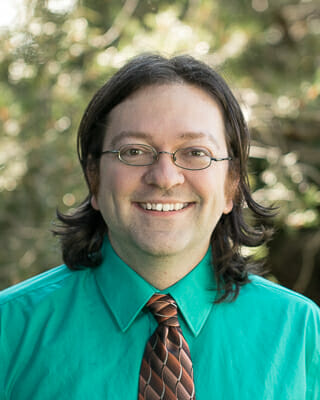
A pilot project at Farmingdale State College is engaging both freshmen and transfer students in undergraduate research. Here are the details.
SPOTLIGHT ON INNOVATION SERIES
The US Department of Education has awarded multi-million dollar “First in the World” grants to 18 colleges and universities that are innovating to solve critical challenges with access, recruitment, retention, and student success. At AI, we have interviewed each of the recipients to learn more about the projects these institutions are pursuing, how their approaches are unique, and what other colleges and universities can learn from these new efforts.
This was the second year of the First in the World grants. You can read our interviews with the 24 institutions that received 2014 grants here.
Officials at Farmingdale State College, State University of New York, hope to boost degree completion of at-risk students by engaging them actively in undergraduate research. Their new project, “Creating Research Opportunities for Students,” will use their $2.9 million 2015 First in the World grant to mentor and prepare students for research and then offer a hands-on research experience with a faculty mentor, conducted both on- and off-campus. They project that the initiative will increase their four-year graduation rate by 20%.
Familiar with the research on the efficacy of involving students in real-world research projects and fascinated by Farmingdale’s approach, we spoke recently with Dr. Beverly Kahn who authored the grant application and is Project Director. Kahn is a professor of political science and former provost and vice president for academic affairs.
Taking What’s Worked and Collaborating Across Institutions to Apply It
Kahn has high confidence that the project will be successful because it is based on a proven approach: UCLA’s Program for Excellence in Education and Research in the Sciences (PEERS) program with its carefully-orchestrated 1st and 2nd year program for at-risk students that culminates in an intensive summer research experience with a faculty mentor. However, Kahn admits freely, “Farmingdale is not UCLA. We are a second tier public teaching institution. We’re not wealthy. We don’t have the caliber of students that go to UCLA. We don’t have major research facilities and resources on campus.” Yet, Kahn continues, “with innovative adaptation of the UCLA model, we will implement distinctive interventions – including serious research experiences – that will markedly increase academic success and graduation rates of our high need students.”
That is why the Farmingdale effort is important for other second and third tier public and private institutions to watch. Over the next few years, they will be a living case study of how to take a project that has worked somewhere big and apply it anywhere.
Because Farmingdale State College lacks major research facilities on its own campus, adapting UCLA’s program to fit their needs requires partnership with a range of other research institutions. Kahn already has 21 letters of commitment from scientists in the NYC area who have agreed to take faculty and students into their research labs. These include opportunities at the American Museum of Natural History, Broad Hollow Bioscience Park, Cold Spring Harbor Laboratory, Stony Brook University, the Feinstein Institute, Brookhaven National Laboratory, NYU Medical School, and Rutgers University.
Farmingdale will also expand the UCLA model beyond the STEM fields to include business, and they are working with business accelerators to give students research experience in developing business and marketing plans and more. In addition, Farmingdale is also creating a Mid-Atlantic Consortium with similar institutions to test the undergraduate research experience and model best practices for institutions across the country. Partners in this consortium include Central Connecticut State University, Bowie State University, Kean University, and SUNY College at Old Westbury.
A Close Look at the Program
One thing that impresses us about Farmingdale’s initiative is that it targets two distinct cohorts: both freshmen and transfer students. Freshmen will participate in a two-year program, with the research project itself situated in the summer after their second year. Transfer students (approximately one half of Farmingdale’s students are transfers from community colleges) will participate in a one-year program and do research in the summer after their junior (or transfer) year.
Both versions of the program will target students from at-risk populations, including first-generation students, under-represented students, low-income students, and adult learners.
Leading up to the research experience, the program includes these activities:
- Counselors will meet with students twice per semester.
- Faculty advisors in the student’s major will meet with students once per semester.
- The program will include special events — such as social receptions, guest speakers, and seminars — as well as access to a digital archive of the events, including a YouTube channel.
- Students will participate in Treisman-style collaborative learning workshops, and the program will focus on high-impact learning practices and project-based learning.
- The program includes a first-year experience course and a sophomore/transfer experience course to teach students to how to do research, how to apply to graduate school, and to introduce career options.
Farmingdale will also invest in faculty and curricular development.
Kahn describes the program as being designed to “launch students well.” The hope is that after two years of a carefully monitored, project-based program and after the opportunity to do real-world research in their chosen major as early as the end of the sophomore year, students will gain excitement about their major and their academic studies.
Farmingdale will enroll 1,000 students in the program during the grant’s four years, starting with the Fall 2016 cohort. Their partner schools will also enroll 400 students each in the program, to reach a total of 2,600 students.
Keys to Success
Kahn notes that the two keys to the program succeeding are:
- Ensuring that all activities are integrated and aligned to make sure everything leads up to a successful research experience.
- Providing faculty development to support junior faculty who are eager to mentor students in research.
Farmingdale will also train faculty to apply for administrative supplements for major grants, and Kahn hopes that by pairing faculty with scientists at major research institutions, faculty will also have the opportunity to publish more as well. The grant includes funds for Farmingdale’s research partners, which should aid in follow-through and in placing students successfully in off-campus research settings.
Kahn speaks passionately about the importance and timeliness of this project:
“It’s us — the second or third tier publics and privates — who educate the bulk of American kids in college. We’re the ones who are going to make it or break it for our country’s ambitious completion goal. If we can take something that’s proven at a more elite school and refine it and do it at our schools and prove that it’s effective here, too, then it can be a model replicated by universities and colleges, public and private, across the country.”
Beverly Kahn, Farmingdale State College
At Academic Impressions, we are excited to see how this program develops and what results it achieves. If successful, the program is expected to double Farmingdale State College’s four-year graduation rate (from 20% to 40%) while also providing at-risk students with real-world research experience and career development.


